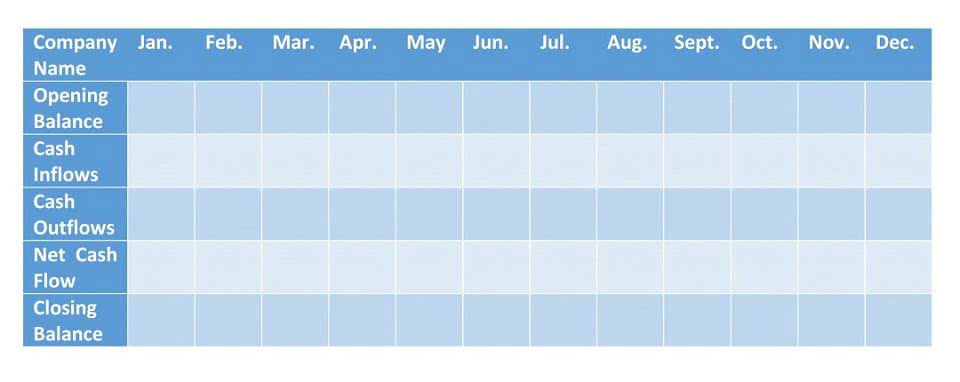
During times of significant price fluctuations, financial reports may overestimate profitability, giving a misleading picture of actual margins. FIFO and LIFO differ in how they manage inventory costs, affecting financial statements, tax liabilities, and overall business profitability. LIFO can be a strategic choice for businesses looking to reduce taxable income, but it also has limitations depending on accounting regulations and financial reporting goals. Two of the most common inventory valuation methods are FIFO (First In, First how to calculate fifo and lifo Out) and LIFO (Last In, First Out). Opting for the LIFO method aligns inventory flow with how items are typically used or sold, allowing for improved cash flow by deferring tax payments on increased profits when product costs are rising. Building on solid inventory management practices, calculating the Cost of Goods Sold (COGS) is a crucial step in understanding your company’s profitability.
How do FIFO and LIFO affect inventory turnover?

Optimize inventory valuation, cut costs, and improve your business’s financial accuracy. Using both the FIFO and LIFO methods will allow you to streamline your inventory management seamlessly. You will be able to make informed decisions, optimize your stock valuation, and embrace sound financial strategies. You calculate it by taking the beginning how is sales tax calculated inventory cost, adding net purchases made during the period, and then subtracting the COGS.
Financial Flexibility for Businesses with Volatile Costs
- These industries deal with expiration dates and regulatory requirements, making it essential to move inventory in a first-in, first-out manner.
- At any point in time, the perpetual inventory card can, therefore, provide information about purchases, cost of sales and the balance in inventory to date.
- Manufacturers of vehicles, machinery, and industrial equipment often experience fluctuations in material costs, such as steel and electronics.
- Dive into the mechanics of FIFO and LIFO calculators, essential tools for inventory managers seeking precise asset management solutions.
- Choosing between FIFO and LIFO depends on your business goals, tax strategy, and financial reporting needs.
- Under the LIFO method, the 100 units sold in March would be valued at $7 each (from the February purchase), and the remaining 50 units would be valued at $5 each (from the January purchase).
- Or how two companies with the same amount of inventory can report different profits?
LIFO is most commonly used by businesses dealing with non-perishable goods, fluctuating material costs, and industries where inventory costs are highly variable. Companies that deal with rapidly changing raw material prices benefit from LIFO because it allows them to adjust COGS in response to market conditions. This flexibility benefits manufacturing industries such as metals, fuel, and construction materials, where price fluctuations impact profitability. In sectors where older stock holds its value, FIFO might inflate reported profits and distort financial projections compared to methods like LIFO or weighted average cost.
Weighted Average Cost (WAC)
In contrast, LIFO uses the most recent, typically higher-cost inventory to calculate COGS. During inflation, this increases COGS, which lowers gross profit and net income, ultimately reducing the company’s tax liability. The remaining inventory on the balance sheet is valued at older, lower costs, which can understate the true value of current inventory in times of rising prices.

- While adopting LIFO may introduce some complexity into record-keeping and financial reporting, its potential benefits for cash flow management often outweigh these challenges.
- The selection of a method depends on various factors, including regulatory requirements, industry norms, and the specific circumstances of the business.
- The method you choose for inventory valuation affects your cost of goods sold (COGS), gross profit, and net income.
- This flexibility benefits manufacturing industries such as metals, fuel, and construction materials, where price fluctuations impact profitability.
- Under first-in, first-out method, the ending balance of inventory represents the most recent costs incurred to purchase merchandise or materials.
LIFO is not just about cost allocation; it also integrates seamlessly with certain types of inventory flows, particularly in industries where items are perishable or become obsolete quickly. Dive into the mechanics of FIFO and LIFO calculators, essential https://www.bookstime.com/articles/how-an-accountant-can-help-your-business tools for inventory managers seeking precise asset management solutions. Entering this data successfully will allow you to figure out the FIFO and LIFO values. Remember that your accountant needs to know the value of your inventory month by month to understand the health of your business, so it is not enough to take inventories every so often.

Can improve cash flow
- Using FIFO, the cost of goods usually stays stable, making it easy to track inventory and costs.
- Let’s go over how LIFO and FIFO would change financial recording for the same inventory.
- Understanding the benefits and potential drawbacks will help you decide whether FIFO fits your inventory management strategy.
- Beyond just tracking, intelligent inventory management simplifies maintenance workflows.
- Using the FIFO method, they would look at how much each item cost them to produce.
- During inflation, this increases COGS, which lowers gross profit and net income, ultimately reducing the company’s tax liability.
- Companies that deal with rapidly changing raw material prices benefit from LIFO because it allows them to adjust COGS in response to market conditions.
Inventory accounting is crucial for retail businesses as it directly impacts financial statements and tax calculations. The method you choose for inventory valuation affects your cost of goods sold (COGS), gross profit, and net income. Therefore, selecting the right inventory costing method is more than just compliance; it’s a strategic business decision. Your choice of inventory costing method can be a powerful tool in strategic tax planning. FIFO typically results in higher taxes due to higher profits, whereas LIFO can reduce taxable income when prices are rising.
